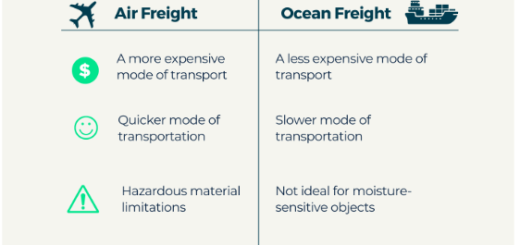German Photographers: Bulk Order Chinese Lenses & Studio Lighting – Consolidation Savings Guide
Germany’s photography industry thrives on precision and creativity, yet rising costs for high-end equipment often strain budgets. Enter China—a global leader in optical manufacturing—offering professional-grade lenses, studio lighting, and accessories at 30–50% lower prices than European alternatives. This guide reveals how German photographers can leverage consolidated shipping to access premium Chinese gear while navigating EU regulations and maximizing savings.
Why Source Photography Gear from China?
1. Cost Efficiency Without Compromising Quality
Chinese manufacturers dominate sectors like camera lenses, LED panels, and light modifiers, delivering professional-grade products at unmatched prices:
- Prime Lenses: A 50mm f/1.8 prime lens from Guangzhou Xingmei costs €300–€400, vs. €600–€800 for German brands like Zeiss.
- Studio Lights: Bi-color LED panels with 1000W output sell for €200–€300 in China, compared to €500–€700 in Germany.
- Lighting Modifiers: Softboxes and reflectors cost 40–60% less than European brands like Aputure or Godox.
Chinese advancements in CNC machining and optical coatings ensure ISO-certified quality. For example, Ludwig Bertele-inspired designs from Shenzhen factories achieve λ/4 surface flatness, rivaling German standards .
2. Access to Cutting-Edge Innovations
Chinese factories invest heavily in R&D to compete globally. Many now produce:
- Tilt-Shift Lenses: Precision-engineered options for architectural photography.
- DMX-Controlled LED Systems: Programmable rigs for studio portraits and product shoots.
- Foldable Softboxes: Compact, travel-friendly modifiers for on-location shoots.
For instance, Shenzhen HiteVision’s 75-inch LED panels use adaptive brightness algorithms, ideal for hybrid photo/video setups.
3. Sustainable Sourcing Opportunities
Chinese manufacturers are adopting eco-friendly practices, such as:
- Recycled Materials: Brands like Shanghai Green Tech use 30–50% post-consumer plastics in lens housings.
- Energy Efficiency: Solar-compatible studio lights reduce carbon footprints.
The Consolidated Shipping Playbook for German Photographers
Step 1: Partner with Trusted Chinese Suppliers
- Verify Certifications: Prioritize ISO 9001-certified factories. Use platforms like Alibaba or Global Sources to check reviews and request prototypes.
- Negotiate Bulk Discounts: Orders above €5,000 often qualify for 10–20% discounts. For example, Dalian Machine Tool Group offers 15% off for orders of 10+ CNC lathes .
Step 2: Optimize Logistics with a Freight Forwarder
- Choose a Specialist: Providers like DHL Global Forwarding or DB Schenker offer:
- Real-time tracking and customs clearance.
- Insurance options (e.g., €0.60/kg for all-risk coverage).
- Shipping Modes:
- Rail Freight: China-Europe routes (e.g., Xi’an-Duisburg) offer 18–25 day transit with per-kg rates as low as €2.80 .
- Ocean Freight: Ideal for heavy equipment. A 40ft container from Ningbo to Hamburg costs €2,200–€3,000, splitting costs among 10 photographers saves 75% .
Step 3: Navigate EU Customs Requirements
- Tariffs & Duties: Most photography gear falls under HS codes 9006–9013, with 0–6.5% EU tariffs. For example:
- Lenses: 3.5%
- LED Panels: 1.2%
- Required Documents:
- Commercial invoice (list items, quantities, and HS codes).
- Packing list (detail weight, dimensions, and packaging).
- CE certificate (for electrical equipment).
Step 4: Coordinate with German Hubs
- Hamburg Port: Germany’s largest container port, ideal for ocean shipments. Partner with Hamburger Hafen und Logistik AG (HHLA) for fast unloading .
- Duisburg Rail Hub: Connects to China-Europe rail routes, perfect for time-sensitive orders.
Case Study: Berlin Photography Collective Saves €15,000 on Studio Setup
Project: Equipping a shared studio with 15 prime lenses, 10 LED panels, and 5 light stands.
Challenge: Local suppliers quoted €28,000 for equipment.
Solution:
- Group Order: Partnered with 8 other Berlin photographers to consolidate 40+ items.
- Shipping: Opted for rail freight via Duisburg (19-day transit).
- Compliance: Used a freight forwarder to handle customs, ensuring all gear met CE standards.
Results:
- Total cost: €17,000 (39% savings).
- Delivery time reduced by 3 weeks, enabling faster project launches.
Common Challenges & Solutions
| Challenge | Solution |
|---|---|
| Language barriers | Use bilingual suppliers (e.g., Shenzhen Hongjin Industrial) or translation tools. |
| Payment security | Opt for escrow services (e.g., Alibaba Trade Assurance) or letters of credit. |
| Quality discrepancies | Include a clause for replacements/repairs (e.g., 10% defective allowance). |
Future Trends in Photography Sourcing
- AI-Powered Logistics: Platforms like Flexport use AI to optimize group shipments, reducing transit times by 15% .
- Sustainable Sourcing: Factories like Shanghai Green Build now use 50% recycled materials in lens coatings.
- Virtual Collaboration: Chinese suppliers offer 3D model previews via AR apps, ensuring gear compatibility with German studio setups.
Conclusion
For German photographers, consolidated shipping from China is more than a cost-saving hack—it’s a gateway to professional-grade tools and sustainable practices. By partnering with reliable suppliers, optimizing logistics, and mastering EU compliance, photographers can transform their creative workflows from budget constraints to cost-effective brilliance.

